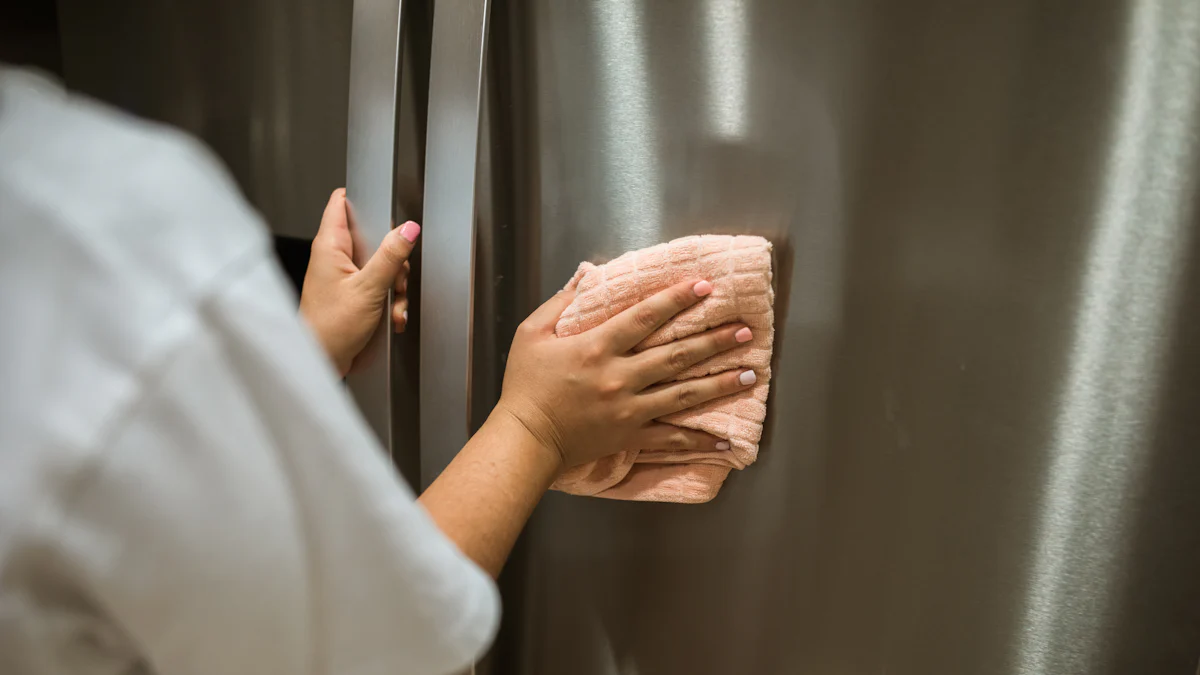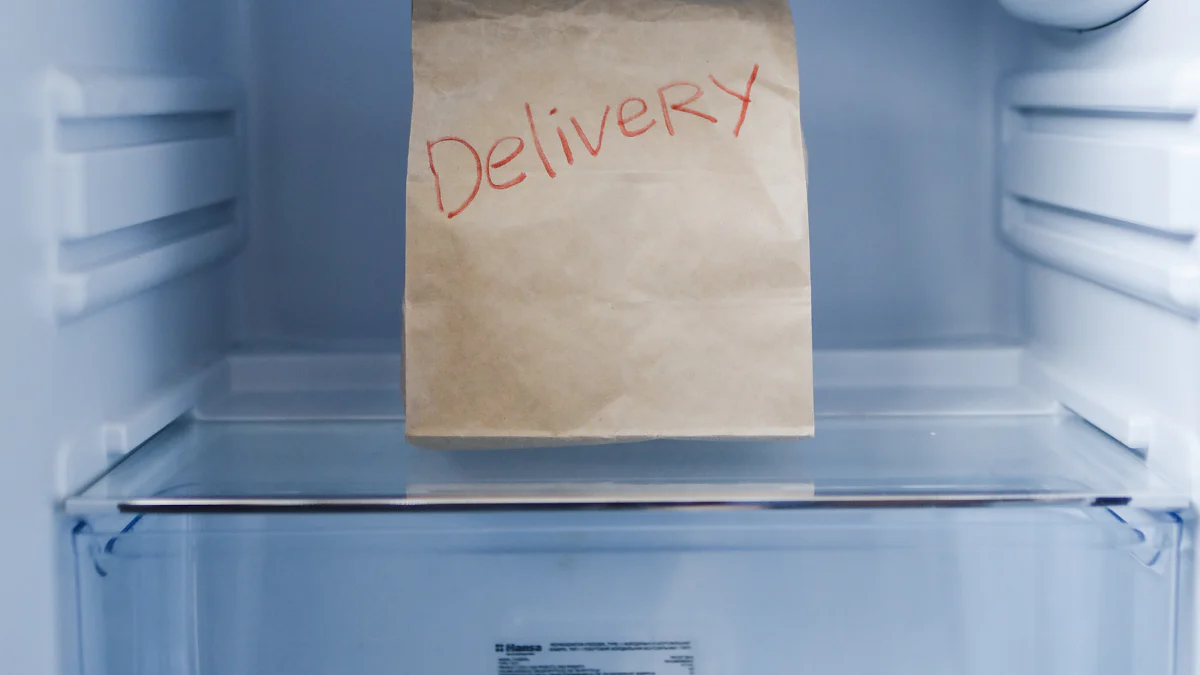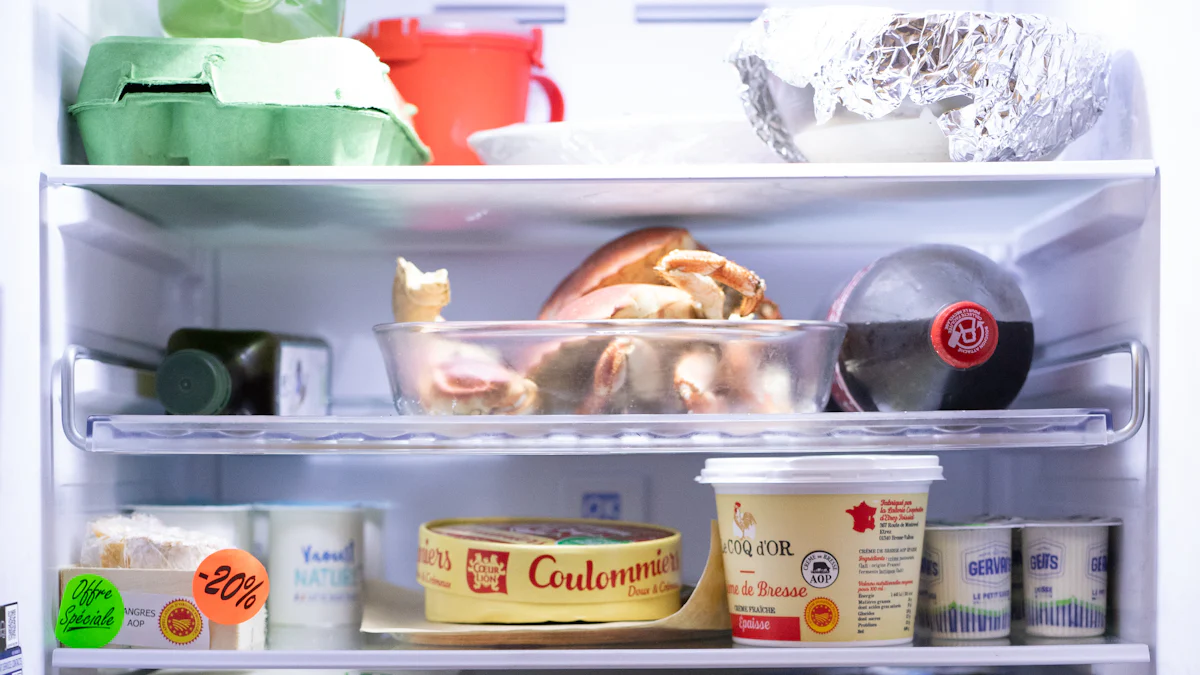How to Maintain Your Plate Freezer for Peak Performance

Maintaining your plate freezer is essential for ensuring consistent performance and energy efficiency. Regular maintenance helps you avoid costly repairs and extends the lifespan of your equipment. Neglecting upkeep can lead to issues like frost buildup, reduced cooling efficiency, and higher energy consumption. Proper care not only keeps your freezers running smoothly but also reduces operational costs over time. By adopting effective maintenance practices, you can maximize the reliability and functionality of your freezer while preserving its long-term value.
Basic Maintenance Practices for Your Plate Freezer

Proper maintenance is the foundation of keeping your plate freezer running efficiently. By following these basic practices, you can prevent common issues and ensure consistent performance.
Regular Cleaning and Hygiene
Keeping your plate freezer clean is essential for maintaining its functionality and ensuring food safety. Residue buildup on the plates can compromise freezing efficiency and lead to contamination. You should clean the plates regularly using a soft cloth and a non-abrasive cleaner. This prevents debris from accumulating and ensures optimal contact between the plates and the products being frozen.
Defrosting is another critical step in your cleaning routine. Frost and ice buildup can reduce the freezer's efficiency and strain its components. Schedule regular defrosting sessions to remove ice layers and restore the freezer’s ability to maintain consistent temperatures. This simple practice not only improves performance but also extends the lifespan of your equipment.
Inspecting Seals and Gaskets
Door seals and gaskets play a vital role in maintaining the internal temperature of your plate freezer. Over time, these components can wear out, leading to air leaks that compromise cooling efficiency. Inspect the seals and gaskets frequently for signs of wear, such as cracks or tears. If you notice any damage, replace or repair them immediately to prevent cold air from escaping.
Sealing damaged gaskets is a straightforward way to enhance your freezer’s performance. By ensuring a tight seal, you can reduce energy consumption and maintain consistent freezing conditions. This small yet impactful step can save you from costly repairs down the line.
Ensuring Proper Airflow
Adequate airflow is crucial for uniform cooling within your plate freezer. Blocked vents or fans can disrupt the circulation of cold air, leading to uneven freezing and potential product spoilage. Regularly check the vents and fans for obstructions, such as dust or debris, and clean them as needed. This ensures that air moves freely throughout the freezer.
The placement of your plate freezer also affects airflow. Position the freezer in a well-ventilated area with enough space around it to allow proper ventilation. Avoid placing it near walls or heat sources, as this can hinder airflow and strain the system. Maintaining adequate airflow not only improves performance but also reduces energy usage.
Checking Power Supply and Voltage
Ensuring a reliable power supply is essential for the consistent operation of your plate freezer. Electrical issues can disrupt freezing performance and lead to equipment damage. By conducting routine inspections, you can identify potential problems early and maintain optimal functionality.
Regularly Inspecting the Power Supply to Ensure Consistent Operation
Inspect the power supply regularly to confirm it delivers stable electricity to your plate freezer. Loose connections, frayed wires, or damaged plugs can interrupt the power flow and compromise the freezer's performance. Examine the power cord and outlet for visible signs of wear or damage. Replace faulty components immediately to avoid sudden breakdowns.
A stable power source also prevents fluctuations that could harm the freezer's internal systems. If your facility experiences frequent power outages or surges, consider using a surge protector or an uninterruptible power supply (UPS). These devices safeguard your equipment and ensure uninterrupted operation during minor electrical disturbances.
Monitoring Voltage Levels to Prevent Equipment Strain
Voltage irregularities can strain your plate freezer and reduce its efficiency. Use a voltage meter to monitor the levels supplied to the freezer. Consistent readings within the manufacturer's recommended range indicate that the system is operating safely. If you notice significant deviations, consult an electrician to address the issue.
Overvoltage can overheat components, while undervoltage may cause the freezer to underperform. Both scenarios can shorten the lifespan of your equipment. Installing a voltage stabilizer can help regulate fluctuations and protect the freezer from long-term damage. This proactive step ensures your freezer operates at peak performance without unnecessary strain.
By prioritizing power supply checks and voltage monitoring, you can prevent costly repairs and extend the life of your plate freezer. These simple yet effective practices contribute to the overall reliability of your freezing system.
Preventative Measures to Avoid Common Issues

Preventative maintenance practices are essential for avoiding common issues that can disrupt the performance of your plate freezer. By taking proactive steps, you can ensure temperature stability, reduce energy costs, and extend the lifespan of your equipment.
Monitoring and Maintaining Temperature
Maintaining consistent freezing temperatures is critical for preserving product quality and ensuring efficient operation. Temperature fluctuations can lead to uneven freezing, which may compromise the integrity of stored items.
Using a Thermometer or Digital System to Ensure Consistent Freezing Temperatures
You should regularly monitor the internal temperature of your plate freezer using a reliable thermometer or a digital monitoring system. These tools provide accurate readings, helping you identify any deviations from the recommended range. Consistent temperature stability ensures that your freezer operates efficiently and prevents product spoilage.
Calibrating Temperature Controls and Alarms Regularly
Temperature controls and alarms require regular calibration to function correctly. Over time, these components may lose accuracy, leading to incorrect temperature settings. Schedule routine checks to recalibrate the controls and alarms. This practice ensures that your freezer maintains optimal conditions and alerts you promptly to any irregularities.
Avoiding Overloading the Freezer
Overloading your plate freezer can strain its components and reduce its efficiency. Proper organization and adherence to capacity limits are vital for maintaining peak performance.
Understanding the Freezer's Capacity Limits to Prevent Strain
Every plate freezer has a specific capacity limit. Exceeding this limit can hinder airflow and overwork the system, leading to potential breakdowns. Familiarize yourself with the manufacturer's guidelines and avoid overloading the freezer. This simple step helps maintain temperature stability and prevents unnecessary wear on the equipment.
Organizing Products to Allow Even Freezing and Airflow
Proper organization inside the freezer is just as important as adhering to capacity limits. Arrange products in a way that allows cold air to circulate freely. Avoid stacking items too closely, as this can block airflow and result in uneven freezing. By organizing products effectively, you enhance the freezer's efficiency and ensure consistent cooling.
Maintaining a Suitable Environment
The environment surrounding your plate freezer plays a significant role in its performance. External factors like heat, humidity, and unstable surfaces can negatively impact its functionality.
Installing the Freezer on a Stable, Level Surface Within an Insulated Enclosure
Place your plate freezer on a stable, level surface to prevent vibrations and mechanical stress. An insulated enclosure further enhances temperature stability by minimizing external temperature fluctuations. This setup ensures that your freezer operates efficiently and maintains consistent freezing conditions.
Protecting the Freezer from Direct Sunlight, Heat Sources, and Humidity
External heat sources and humidity can compromise the performance of your freezer. Position the unit away from direct sunlight, ovens, or other heat-emitting appliances. Use dehumidifiers if necessary to control moisture levels in the surrounding area. These precautions help maintain optimal operating conditions and reduce energy consumption.
By implementing these preventative maintenance practices, you can avoid common issues and keep your plate freezer running at peak performance. Regular monitoring, proper organization, and environmental adjustments ensure that your equipment remains reliable and efficient.
Advanced Optimization Techniques for Peak Performance
To achieve the best results from your plate freezer, you need to go beyond basic maintenance and adopt advanced optimization techniques. These methods help you fine-tune the equipment, ensuring a balance between performance and efficiency while reducing energy costs.
Adjusting Freezing Parameters
Fine-tuning the freezing parameters of your plate freezer is essential for maintaining freezing efficiency and ensuring product quality. Different products require specific freezing conditions, and adjusting these settings can significantly enhance the freezer's performance.
Setting Optimal Freezing Time and Temperature Based on Product Type
Each product type has unique freezing requirements. For instance, seafood and poultry may need different freezing times and temperatures to preserve their freshness and texture. Regularly assess the type of products you freeze and adjust the settings accordingly. This practice not only ensures optimal performance but also prevents energy wastage by avoiding over-freezing or under-freezing.
Using Programmable Controls for Precision and Efficiency
Modern plate freezers often come equipped with programmable controls. These systems allow you to set precise freezing parameters, ensuring consistent results every time. Use these controls to automate the freezing process, reducing the risk of human error. By leveraging this technology, you can achieve a higher level of freezing efficiency while minimizing operational costs.
Monitoring Fan Speed and Performance
The fans in your plate freezer play a critical role in maintaining uniform airflow and temperature distribution. Monitoring and optimizing their performance can significantly impact the overall efficiency of your freezer.
Adjusting Fan Speed to Optimize Airflow and Energy Efficiency
Fan speed directly affects airflow within the freezer. Adjusting the speed based on the load size and product type can help you maintain consistent cooling while conserving energy. For example, reducing the fan speed during lighter loads can lower energy consumption without compromising performance. Regularly evaluate the fan settings to ensure they align with your operational needs.
Checking Fan Motors and Components for Wear and Tear
Over time, fan motors and other components may experience wear and tear, which can reduce their efficiency. Inspect these parts regularly to identify any signs of damage or malfunction. Replace worn-out components promptly to prevent disruptions in airflow and maintain the freezer's optimal performance. This proactive approach helps you avoid costly repairs and ensures the longevity of your equipment.
Using Alarms and Monitoring Systems
Advanced monitoring systems and alarms provide real-time insights into your plate freezer's operation. These tools enable you to detect and address issues before they escalate, ensuring uninterrupted performance.
Installing Alarms for Temperature Fluctuations and Power Issues
Temperature fluctuations and power interruptions can compromise the quality of your frozen products. Install alarms that alert you to any deviations from the set parameters. These alarms act as an early warning system, allowing you to take immediate action to restore optimal conditions. This simple yet effective measure safeguards your products and enhances the reliability of your freezer.
Utilizing Remote Monitoring Systems for Real-Time Updates
Remote monitoring systems offer unparalleled convenience and control. These systems provide real-time updates on your freezer's performance, enabling you to track key metrics such as temperature, fan speed, and energy usage from anywhere. Use this data to make informed decisions and optimize your freezer's operation. By adopting remote monitoring technology, you can ensure consistent freezing efficiency and reduce downtime.
By implementing these advanced optimization techniques, you can maximize the potential of your plate freezer. Adjusting freezing parameters, monitoring fan performance, and utilizing alarms and monitoring systems help you maintain a balance between performance and efficiency. These practices not only enhance freezing efficiency but also contribute to the long-term reliability of your equipment.
Optimizing Plate and Lifting Speed
Monitoring the Lifting Speed of Aluminum Plates for Effective Product Contact
The lifting speed of aluminum plates in your plate freezer directly impacts freezing efficiency. When the plates move too quickly, they may fail to make proper contact with the products, leading to uneven freezing. On the other hand, slow lifting speeds can delay operations and reduce productivity. Monitoring this speed ensures that the plates maintain effective contact with the items being frozen, preserving their quality and texture.
To achieve optimal results, regularly observe the lifting mechanism during operation. Look for any irregularities, such as jerky movements or delays, which could indicate mechanical issues. Address these problems promptly to maintain smooth and consistent lifting. By ensuring proper contact between the plates and the products, you enhance the freezer's ability to transfer heat efficiently, reducing energy consumption and freezing time.
Adjusting Plate Settings to Enhance Freezing Efficiency
Fine-tuning the plate settings in your freezer can significantly improve its performance. Each product type requires specific freezing conditions, and adjusting the plate pressure and alignment helps meet these requirements. For instance, seafood and poultry may need different levels of contact pressure to achieve optimal freezing. Customizing the settings based on the product ensures uniform cooling and prevents energy wastage.
Follow these steps to optimize plate settings:
Evaluate Product Requirements: Identify the freezing needs of the items you process most frequently. Consider factors like size, shape, and moisture content.
Adjust Plate Pressure: Modify the pressure to ensure firm contact without damaging the products. This step maximizes heat transfer and minimizes freezing time.
Test and Monitor: After making adjustments, test the freezer with a small batch of products. Monitor the results to confirm that the settings deliver consistent and efficient freezing.
Did you know? Plate freezing is up to 30% more energy-efficient than traditional freezing methods. By optimizing plate settings, you can further enhance this efficiency, saving both time and operational costs.
Regular maintenance of the lifting mechanism and plate settings not only boosts performance but also extends the lifespan of your equipment. These adjustments ensure that your plate freezer operates at peak efficiency, delivering high-quality results every time.
Regular maintenance is the cornerstone of keeping your plate freezer in top condition. By cleaning frequently, monitoring temperatures, and optimizing freezing parameters, you ensure consistent performance and energy efficiency. Preventative measures, like avoiding overloading and maintaining a suitable environment, further protect your equipment from unnecessary strain. Advanced techniques, such as adjusting fan speed and utilizing monitoring systems, elevate your freezer's functionality. Implementing these practices not only extends the lifespan of your freezer but also reduces operational costs. Take charge of your freezer's upkeep today to achieve peak performance and long-term reliability.
See Also
Essential Tips for Maintaining Cryogenic Freezers Effectively
Applications of Plate Belt Freezers in Food Production
Exploring the Pros and Cons of Mesh Belt Freezers

